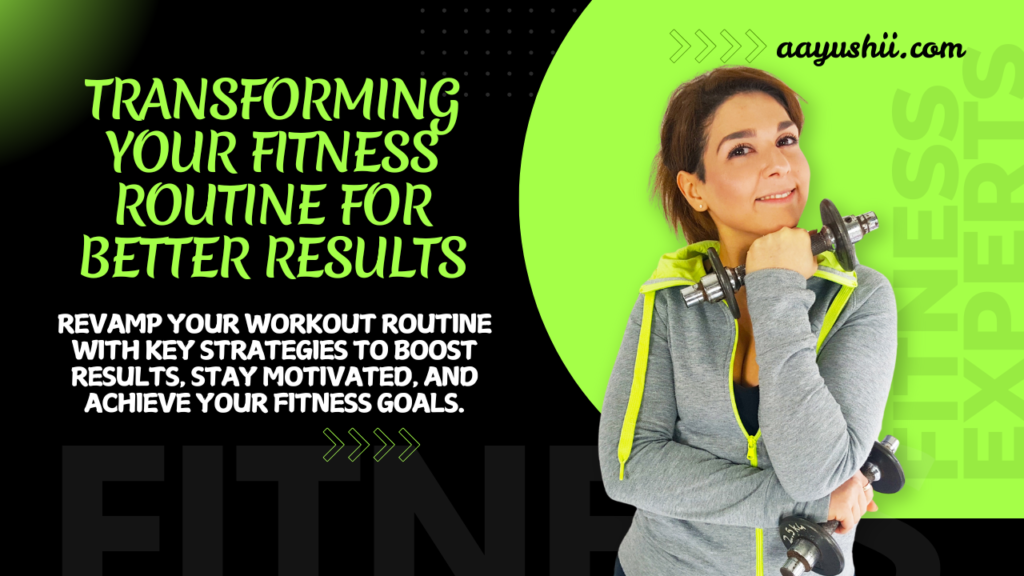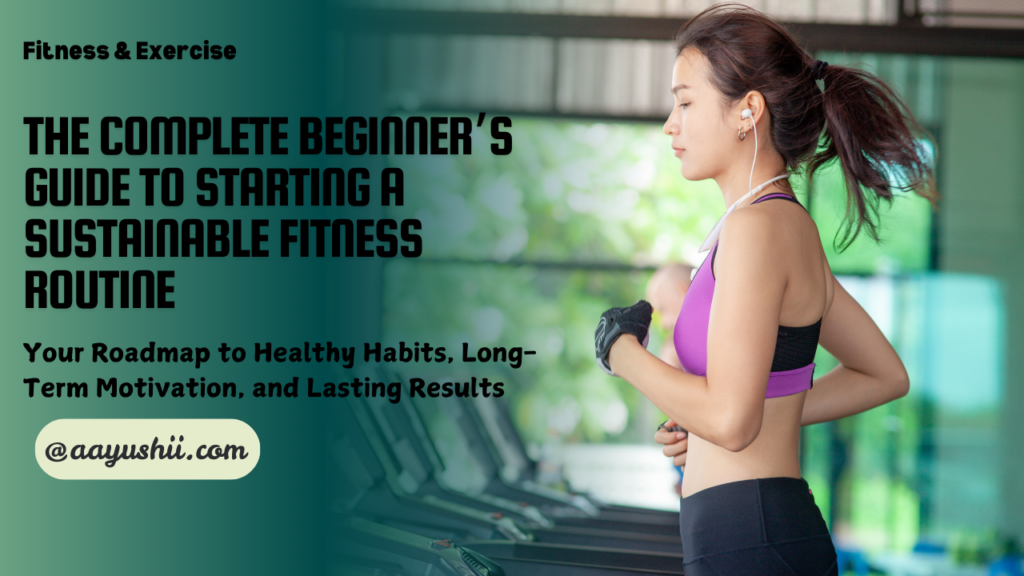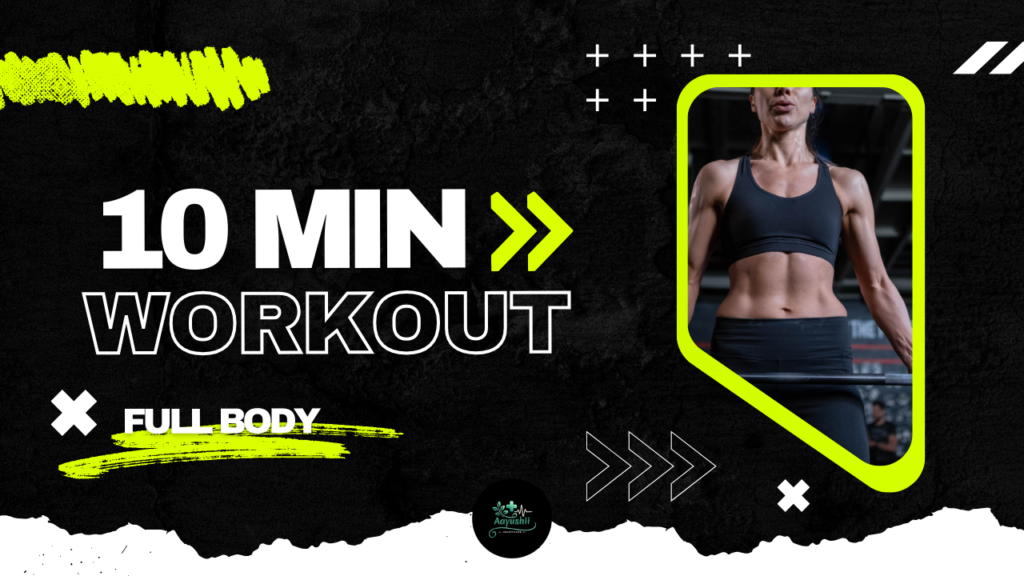Bodyweight exercises have surged in popularity for a simple reason: they work. You can build lean muscle, boost overall strength, and improve cardiovascular health without needing a gym membership or expensive equipment. Using your own body weight as resistance, these exercises—often grouped under the umbrella of calisthenics—can be done in your living room, local park, or even a hotel room when you’re traveling.
In this detailed guide, we’ll dive deep into the science and practice of bodyweight exercises for strength. We’ll cover foundational movements, intermediate and advanced progressions, workout structures, and practical tips to help you see results. Whether you’re a complete beginner or looking to add something new to your routine, this article has everything you need to level up your fitness using only your body weight.
Table of Contents
Why Bodyweight Exercises Are Beneficial
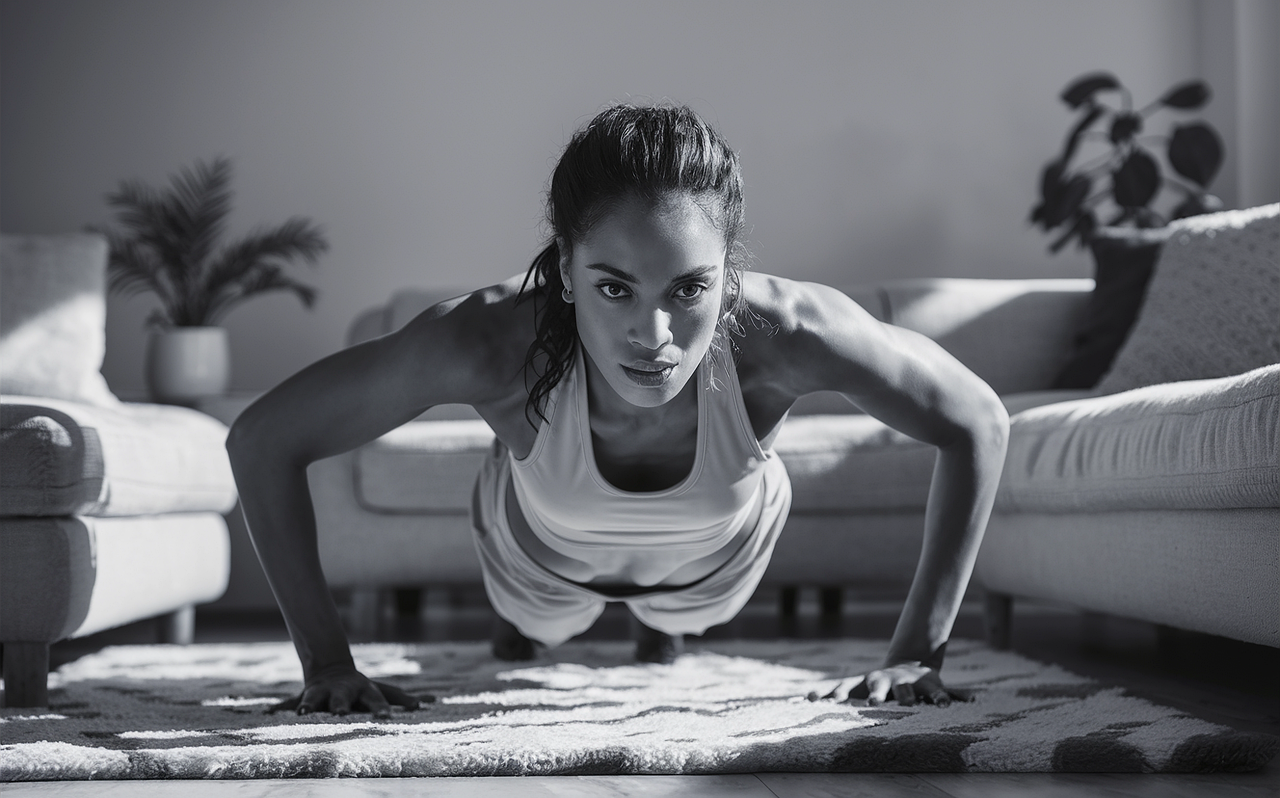
Bodyweight training is about maximizing what you can do with minimal resources. The benefits go beyond mere convenience:
- No Gym Membership Required
A major draw to bodyweight exercises is that they’re free. You don’t need specialized equipment or a high-tech facility. A small space—like a corner of your bedroom or living room—can be enough. - Improves Functional Strength
Movements like push-ups, squats, and lunges train your body to handle real-life tasks more efficiently. This translates to improved balance, coordination, and endurance for everyday activities. - High Versatility and Adaptability
You can easily scale bodyweight exercises to suit your fitness level. Beginners can start with simpler progressions, while advanced athletes can adopt more challenging variations like single-leg squats (pistol squats) or handstand push-ups. - Joint-Friendly Training
Most bodyweight movements rely on compound exercises, meaning multiple joints and muscle groups are involved. This often reduces strain on a single joint, minimizing injury risk when performed with proper form. - Develops Core Stability
Almost every bodyweight exercise requires some level of core activation. Stronger core muscles not only enhance your posture but also support your spine, reducing the likelihood of lower back injuries. - Builds Mind-Body Connection
Using bodyweight exercises can improve body awareness. As you learn to stabilize and balance your body through various planes of motion, you’ll develop better proprioception (sense of body position) that carries over to sports and daily life. - Convenient for Travel
Whether you’re on vacation or a business trip, you can maintain consistency by doing bodyweight workouts in a hotel room or nearby park. You’ll never have to worry about skipping a workout due to lack of equipment.
Key Principles of Bodyweight Training
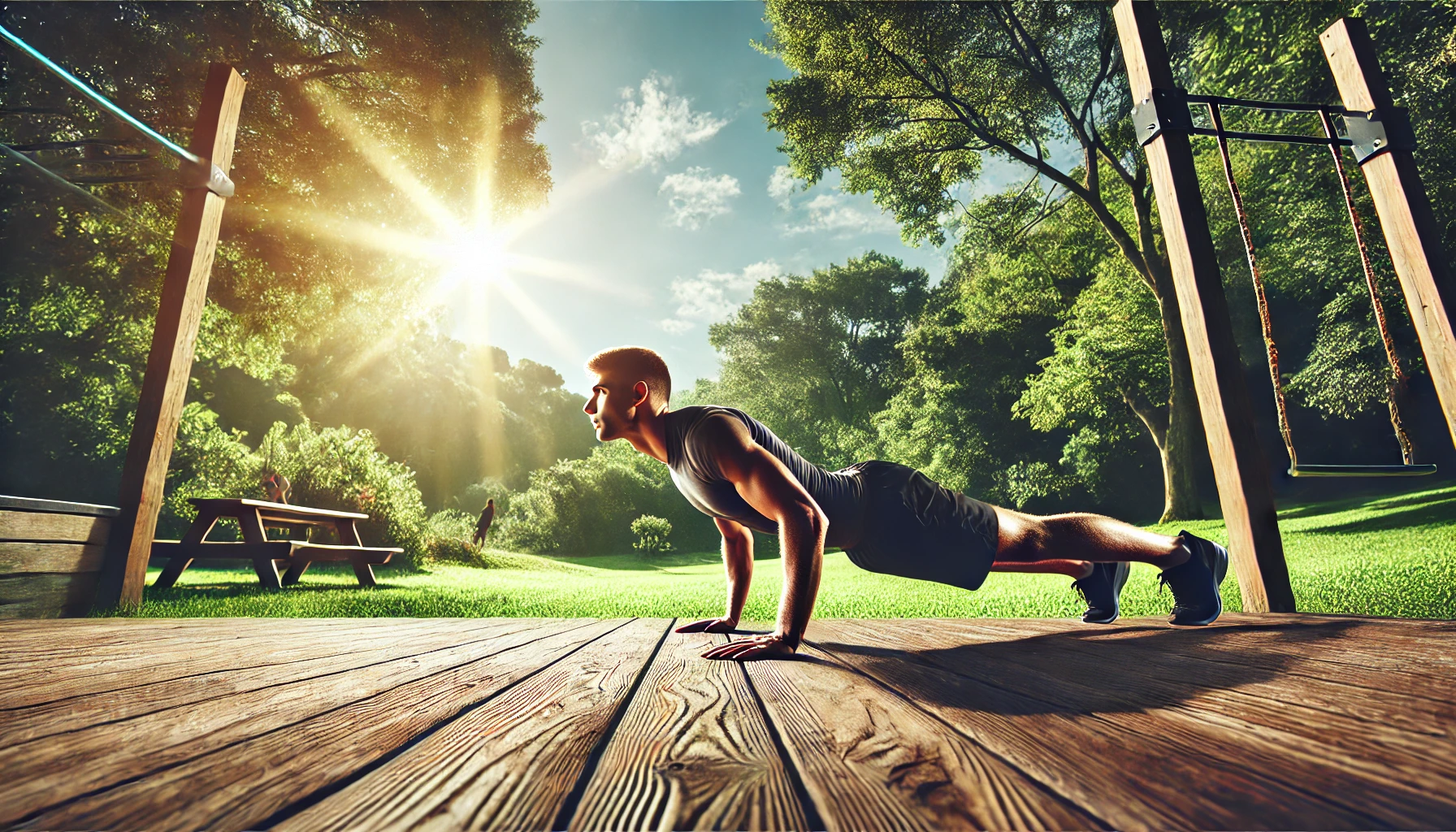
Before you jump into a series of push-ups and squats, it’s important to understand the basic principles that will guide your progress and keep you safe.
1. Progressive Overload
For any strength training method, including bodyweight exercises, the foundation is the principle of progressive overload. To continually make gains in strength and muscle, you need to gradually increase the difficulty or volume of your workouts. This can be done by:
- Increasing the number of reps or sets.
- Slowing down the tempo for more time under tension.
- Progressing to more difficult exercise variations (e.g., going from regular push-ups to diamond push-ups or one-arm push-ups).
- Reducing rest intervals to force your muscles to adapt.
2. Proper Form and Technique
Always prioritize quality over quantity. Especially in bodyweight training, learning the correct form ensures you’re targeting the right muscles while minimizing injury risks. Poor technique not only stalls progress but can lead to nagging joint or muscle issues.
3. Balanced Training
Aim to balance push and pull movements, as well as upper and lower body training. Although bodyweight pulling exercises often require a bar (e.g., pull-ups), you can simulate pulling motions with inverted rows if you have access to a sturdy table or parallel bars in a park. Maintaining a balanced approach helps prevent muscular imbalances that can lead to poor posture and injuries.
4. Consistency
As with any fitness regimen, consistency is key. Commit to a regular schedule—whether it’s three, four, or five days a week—and stay disciplined. Over time, consistency helps you adapt and grow stronger in a sustainable way.
5. Mindful Progress Tracking
Keep track of your reps, sets, rest intervals, and how you feel. This will help you understand what’s working, what might need adjustment, and how you can continue to challenge your body effectively.
Major Muscle Groups Targeted by Bodyweight Exercises
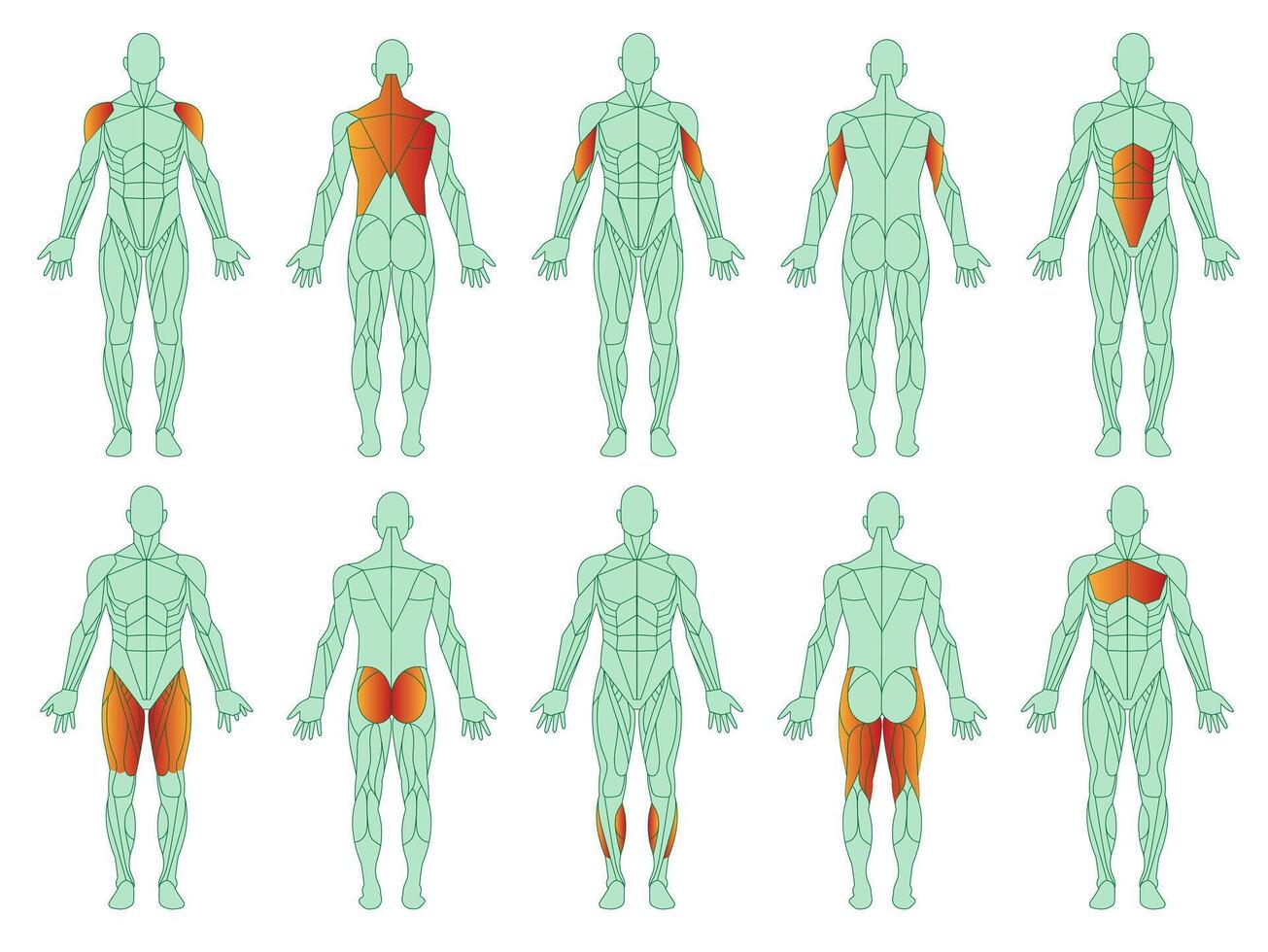
Bodyweight exercises can target every major muscle group—upper body, lower body, and core—and often overlap to engage multiple muscle groups simultaneously. Here’s a quick breakdown:
- Upper Body
- Chest: Primarily targeted by push-ups, dips (on parallel bars or chairs), and various push-up variations.
- Back: Pull-ups, chin-ups, and inverted rows are key back exercises. If you don’t have a pull-up bar, you can improvise using a sturdy table edge or tree branch.
- Shoulders: Standard push-ups, pike push-ups, and handstands place significant emphasis on the shoulder muscles (deltoids).
- Arms: Push-ups and pull-ups also engage the triceps and biceps, respectively.
- Lower Body
- Quadriceps: Squats and lunges are the most common bodyweight exercises to target the front of the thighs (quads).
- Hamstrings: Glute bridges, single-leg deadlifts (using body weight), and lunges also stress the hamstrings.
- Glutes: Squats, lunges, and glute bridges specifically target the buttocks. Proper activation and full range of motion are vital to see consistent improvements.
- Calves: Exercises like calf raises (single-leg or double-leg) are easy to add to any lower-body routine.
- Core
- Rectus Abdominis (Front Abs): Targeted by planks, sit-ups, crunches, and variations like hollow-body holds.
- Obliques (Side Abs): Side planks, twisting crunches, and rotational movements (e.g., Russian twists) help develop side abdominal strength.
- Lower Back (Erector Spinae): Exercises like the Superman and bird dog help strengthen the lower back, ensuring balanced core strength.
By understanding these muscle groups and which exercises target them, you can craft a well-rounded routine that covers your entire body.
Preparing for a Bodyweight Workout: Warm-Up and Mobility

A proper warm-up is essential to prime your body for exercise and help prevent injuries. Skipping the warm-up can lead to muscle strains, reduced performance, and longer recovery times. Here’s how to effectively prepare:
- General Cardio (3–5 minutes)
- Examples: Light jogging in place, jumping jacks, or skipping.
- Purpose: Increases heart rate, elevates body temperature, and boosts blood flow to muscles.
- Dynamic Stretches (5 minutes)
Dynamic stretches involve moving through a comfortable range of motion without holding any one stretch for too long. They help loosen up your joints and mimic exercise movements.- Leg Swings: Swing each leg forward and backward, then side to side.
- Arm Circles: Circle your arms forward and backward for about 10–15 reps each.
- Hip Circles: Rotate your hips in wide circles to mobilize the hip joint.
- Joint Mobilization and Muscle Activation (5 minutes)
- Shoulder Shrugs and Rotations: Helps prepare the shoulder girdle for push-ups and other upper-body moves.
- Knee Hugs and Ankle Rolls: Aids in preparing your lower body for squats and lunges.
- Glute Activation: Perform a few bodyweight glute bridges and bird dogs to activate the glutes and core muscles.
Pro Tip: Warm up until you feel more relaxed and limber. You should feel a slight sweat or warmth, indicating your body is ready to perform at its best.
Foundational Bodyweight Exercises
In this section, we’ll discuss the core exercises that build the foundation for bodyweight strength. Each exercise description includes detailed cues to help you practice perfect form.
Push-Ups
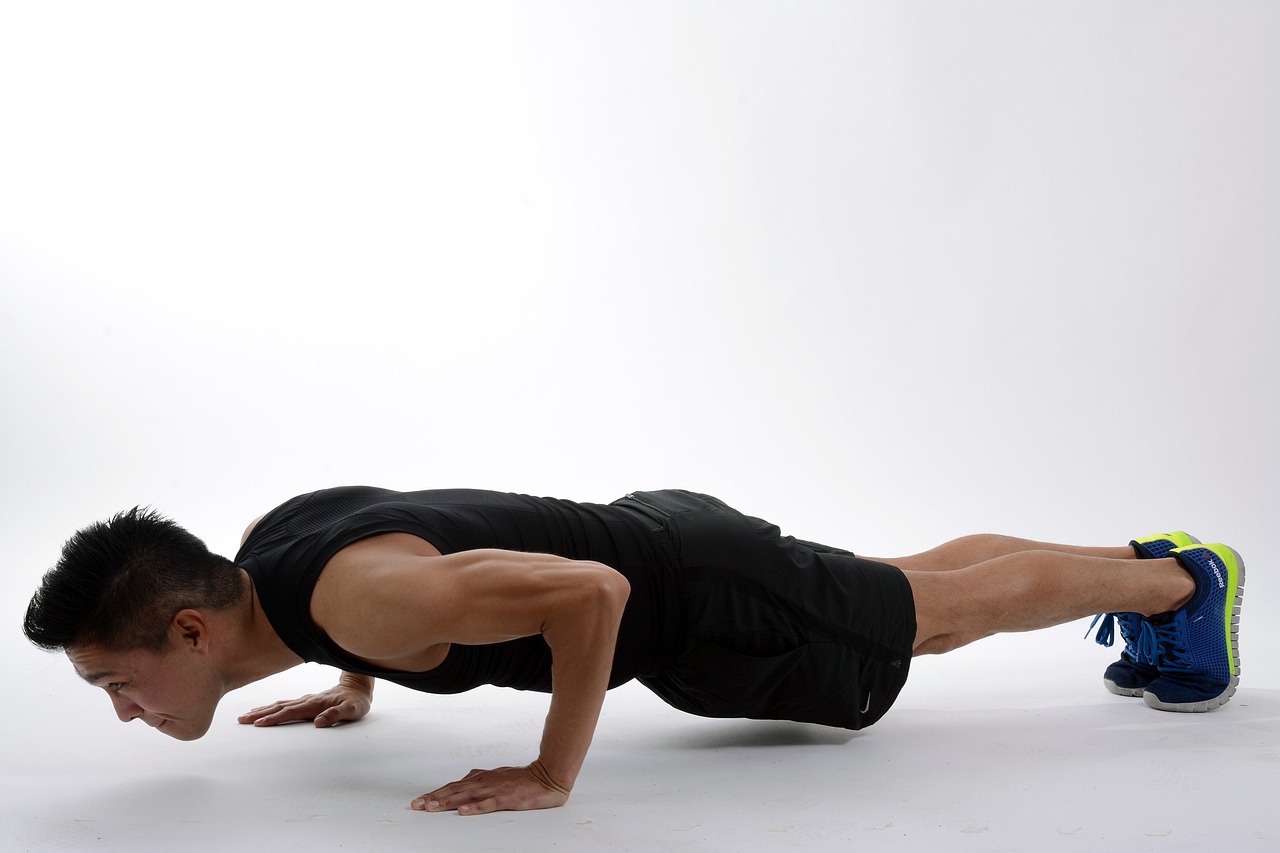
Push-ups are one of the most common and effective bodyweight exercises, targeting the chest, shoulders, and triceps while also engaging the core.
- How to Perform
- Starting Position: Get into a high plank position with hands slightly wider than shoulder-width apart. Your body should form a straight line from head to heels.
- Execution: Bend your elbows to lower your chest toward the floor. Keep your elbows close to your torso for triceps emphasis, or flare them out slightly to target more of the chest.
- End Position: Stop just before your chest touches the floor, then press back up, fully extending your arms.
- Common Mistakes
- Sagging hips or arching the lower back.
- Flaring elbows too wide, leading to shoulder stress.
- Not going low enough or bouncing off the floor.
- Modifications
- Knee Push-Ups: Great for beginners. Lower your knees to the floor but keep your hips forward.
- Incline Push-Ups: Place your hands on a bench or table for an easier variation.
Squats
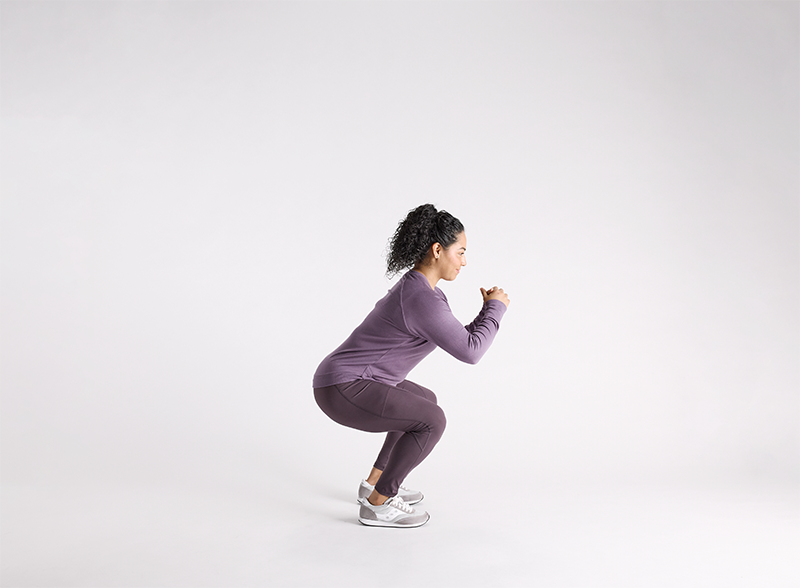
Bodyweight squats primarily target the quads, glutes, and hamstrings while also strengthening the core.
- How to Perform
- Starting Position: Stand with your feet roughly shoulder-width apart, toes slightly angled out.
- Execution: Hinge at the hips and bend your knees to lower into a squat. Keep your chest lifted and back flat.
- Depth: Aim to get your thighs at least parallel to the ground, depending on mobility.
- Return: Drive through your heels to stand back up, squeezing the glutes at the top.
- Common Mistakes
- Rounding the back or letting the chest collapse forward.
- Raising the heels off the ground (sign of tight calves or leaning too far forward).
- Knees caving inward (focus on driving knees outward).
- Modifications
- Half Squats: For beginners with limited mobility, go only halfway down while maintaining form.
- Assisted Squats: Use a stable chair or wall for support.
Lunges
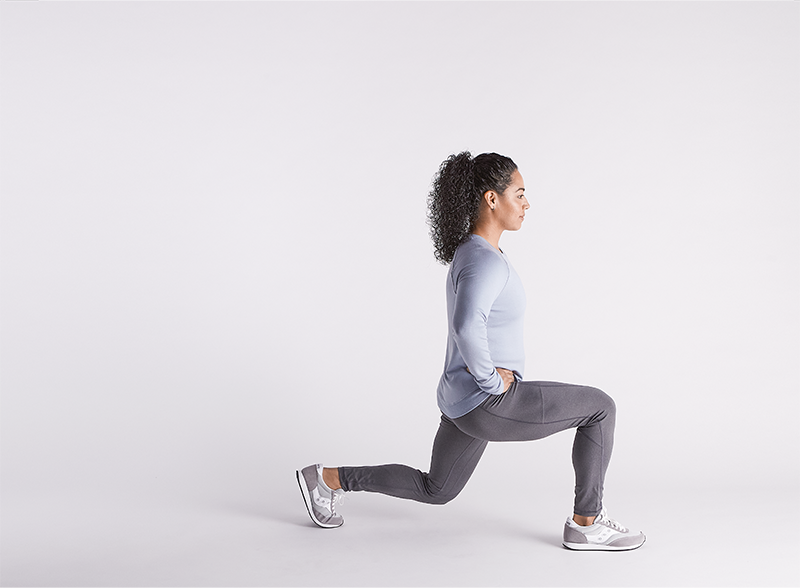
Lunges help build unilateral strength, targeting quads, hamstrings, and glutes, and also engage stabilizer muscles.
- How to Perform
- Starting Position: Stand tall with feet together.
- Step Forward: Take a step forward with one leg.
- Lower the Body: Bend both knees until your front thigh is nearly parallel to the floor, and your back knee hovers slightly above the ground.
- Push Back Up: Push through your front foot to return to the starting position. Repeat on the opposite leg.
- Common Mistakes
- Stepping too far forward or too short.
- Bending the torso excessively forward.
- Letting the front knee track too far over the toes or cave inward.
- Variations
- Reverse Lunges: Step backward instead of forward, which can reduce stress on the knee.
- Walking Lunges: Keep stepping forward and alternate legs for a dynamic workout.
Planks
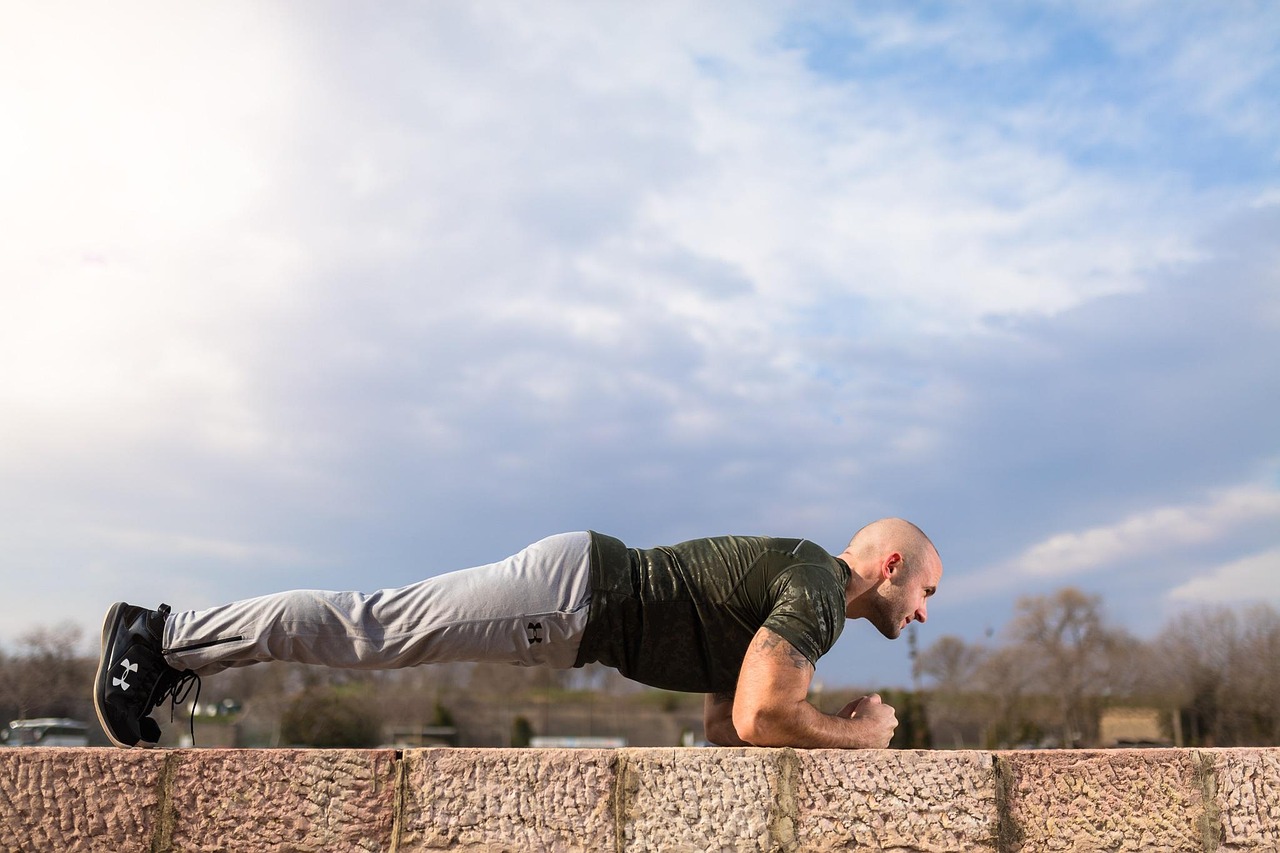
A plank is a gold-standard exercise for core strength, targeting abs, lower back, and shoulders.
- How to Perform
- Elbow Plank: Place your forearms on the ground, elbows under shoulders. Keep your body straight from head to heels.
- High Plank: Same alignment but with arms fully extended, palms under the shoulders.
- Hold: Maintain a neutral spine, engage your core, and avoid letting the hips drop or rise.
- Common Mistakes
- Letting hips sag (puts strain on the lower back).
- Raising hips too high (reduces core engagement).
- Holding the plank with a relaxed core.
- Progressions
- Side Planks: Target the obliques more directly.
- Plank with Shoulder Taps: Add instability by lifting one hand to tap the opposite shoulder.
Glute Bridges
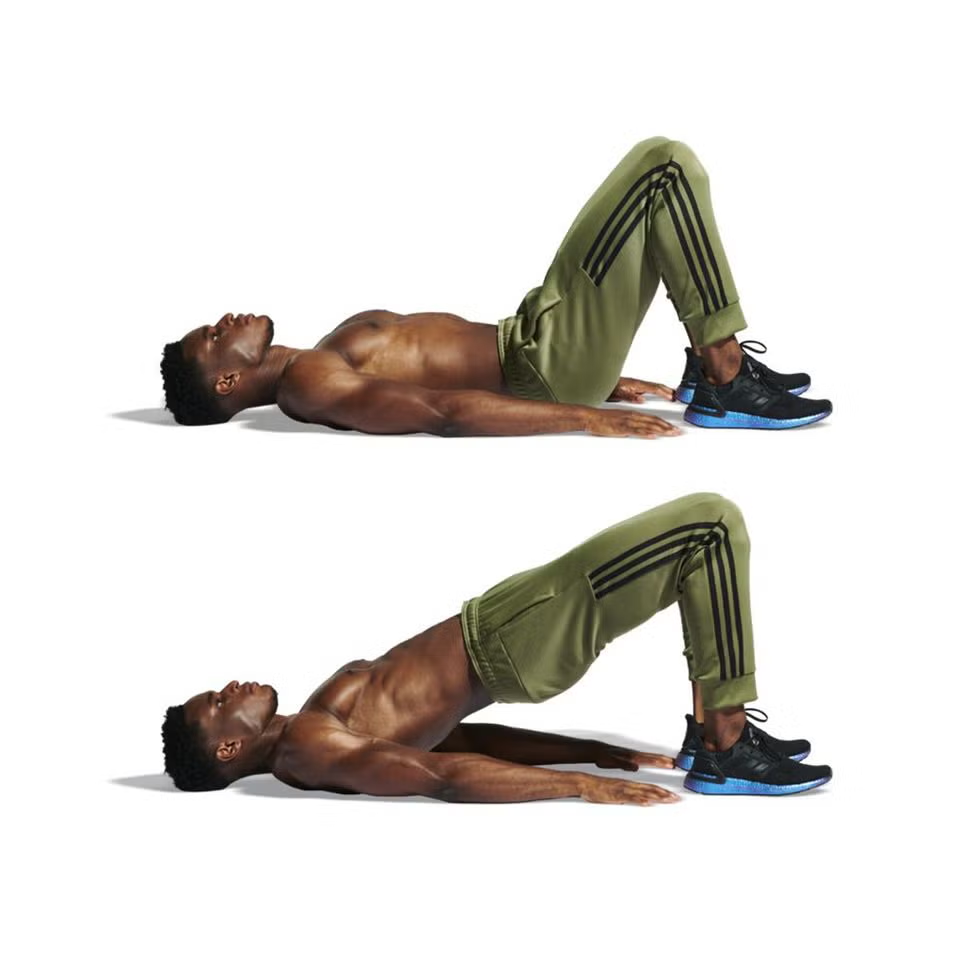
Glute bridges are essential for targeting the glutes and hamstrings, and they also help stabilize the lower back.
- How to Perform
- Starting Position: Lie on your back with knees bent, feet flat on the floor and hip-width apart.
- Engage: Drive your hips upward by pressing through your heels.
- Peak Contraction: At the top, your body forms a straight line from shoulders to knees.
- Lower: Slowly bring your hips back down without fully resting.
- Common Mistakes
- Arching the lower back instead of using the glutes to lift.
- Pushing from the toes, which reduces glute activation.
- Progressions
- Single-Leg Glute Bridge: Extend one leg straight and perform the bridge on one leg to increase difficulty.
Mountain Climbers
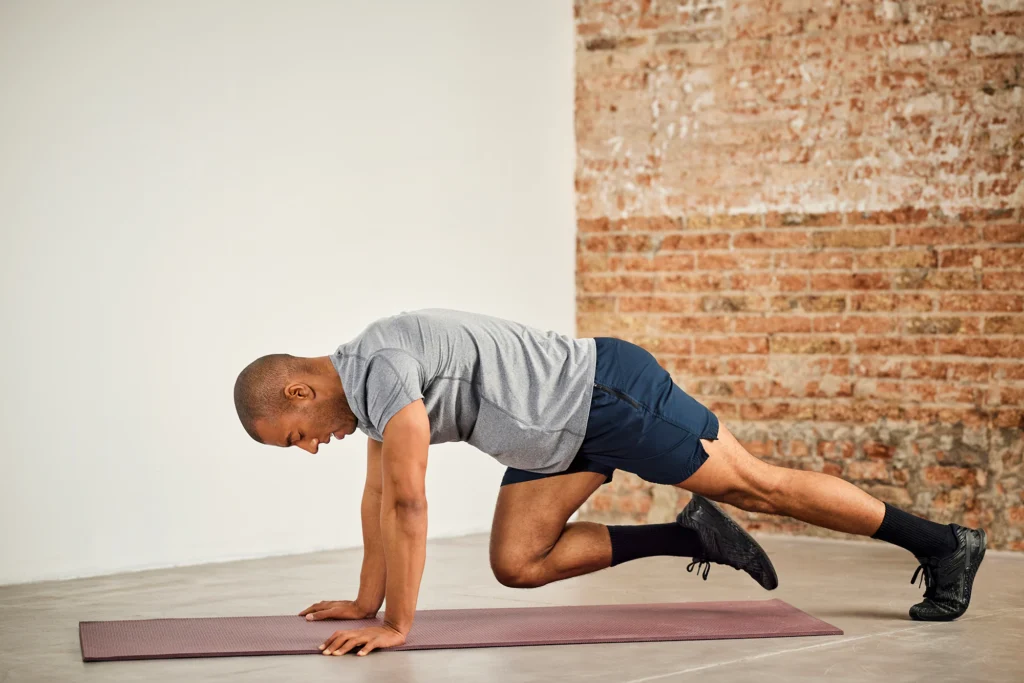
A dynamic exercise that raises your heart rate while targeting the core, shoulders, and legs.
- How to Perform
- Starting Position: Get into a high plank position, shoulders over wrists.
- Movement: Drive one knee toward your chest, then switch legs rapidly, as if running in place.
- Pace: Keep your core tight, and try to maintain a steady rhythm.
- Common Mistakes
- Letting hips pike up too high.
- Failing to engage the core, leading to lower back strain.
- Variations
- Cross-Body Mountain Climbers: Bring your knee toward the opposite elbow for added oblique engagement.
- Slow-Motion Climbers: Perform slowly to increase time under tension and focus on core stability.
Intermediate and Advanced Variations
Once you’ve mastered the foundational exercises, you can ramp up the challenge. Below are some popular intermediate and advanced progressions to keep challenging your muscles.
Advanced Push-Up Variations
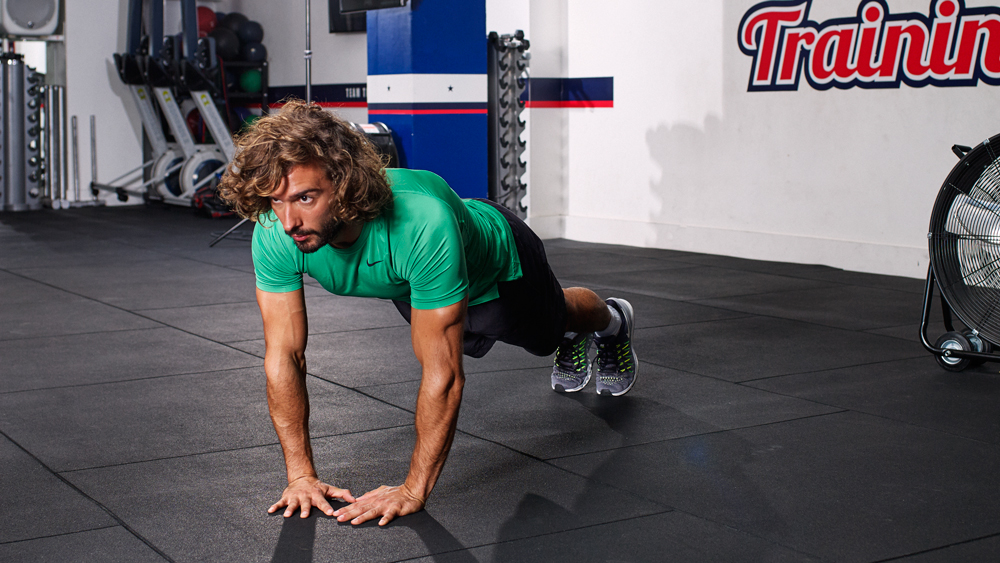
- Diamond Push-Ups
- Hands close together under your chest, forming a diamond shape with your thumbs and index fingers.
- Targets the triceps heavily, along with the chest and shoulders.
- Decline Push-Ups
- Place your feet on a raised surface like a chair or bench.
- Puts more emphasis on the upper chest and shoulders.
- Archer Push-Ups
- One arm bends normally while the other extends out to the side, distributing body weight asymmetrically.
- A stepping stone toward one-arm push-ups.
- One-Arm Push-Ups
- The ultimate push-up variation for advanced trainees, requiring substantial core and upper-body strength.
Advanced Squat Variations
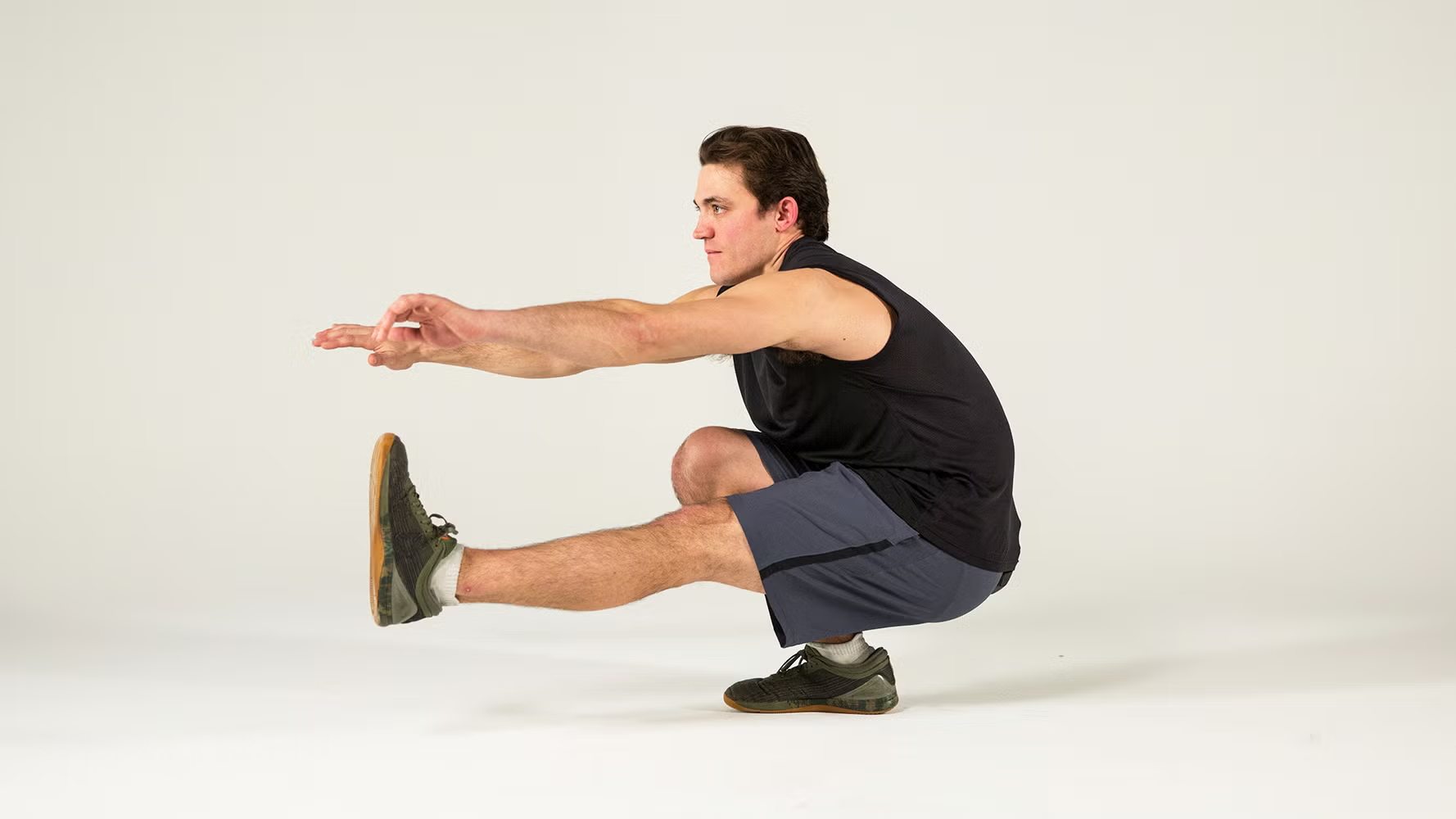
- Pistol Squats (Single-Leg Squats)
- Squat down on one leg while extending the other leg forward.
- Requires balance, mobility, and significant leg strength.
- Bulgarian Split Squats
- Elevate your rear foot on a bench or chair.
- Places more load on the working leg, helping build unilateral leg strength.
- Jump Squats
- Explode upward from the bottom of your squat to add a plyometric component.
- Great for developing power but be mindful of landing mechanics.
Plyometric Exercises
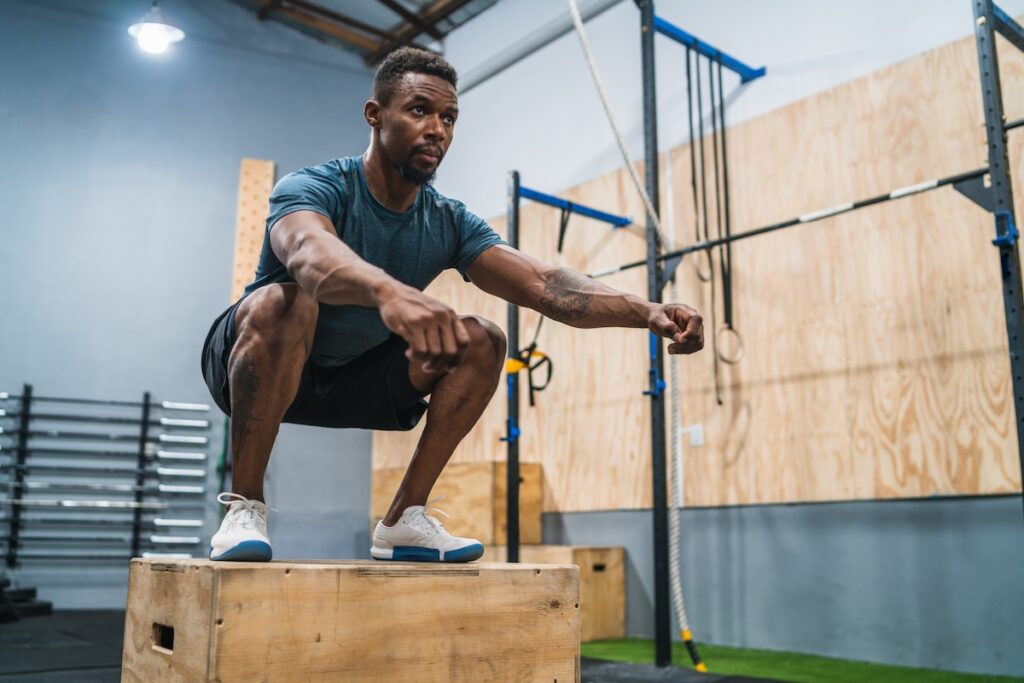
Plyometric movements emphasize explosive power, stimulating fast-twitch muscle fibers for increased strength and athleticism.
- Clapping Push-Ups
- From the bottom of a push-up, explode upwards so your hands leave the ground.
- Clap your hands quickly before returning them to the floor.
- Box Jumps (If you have a sturdy platform)
- Jump onto a stable box or bench and step back down carefully.
- Targets legs, glutes, and core while boosting explosiveness.
- Tuck Jumps
- From a standing position, jump and bring your knees toward your chest.
- Land softly, absorbing the impact through your hips and knees.
Core Progressions
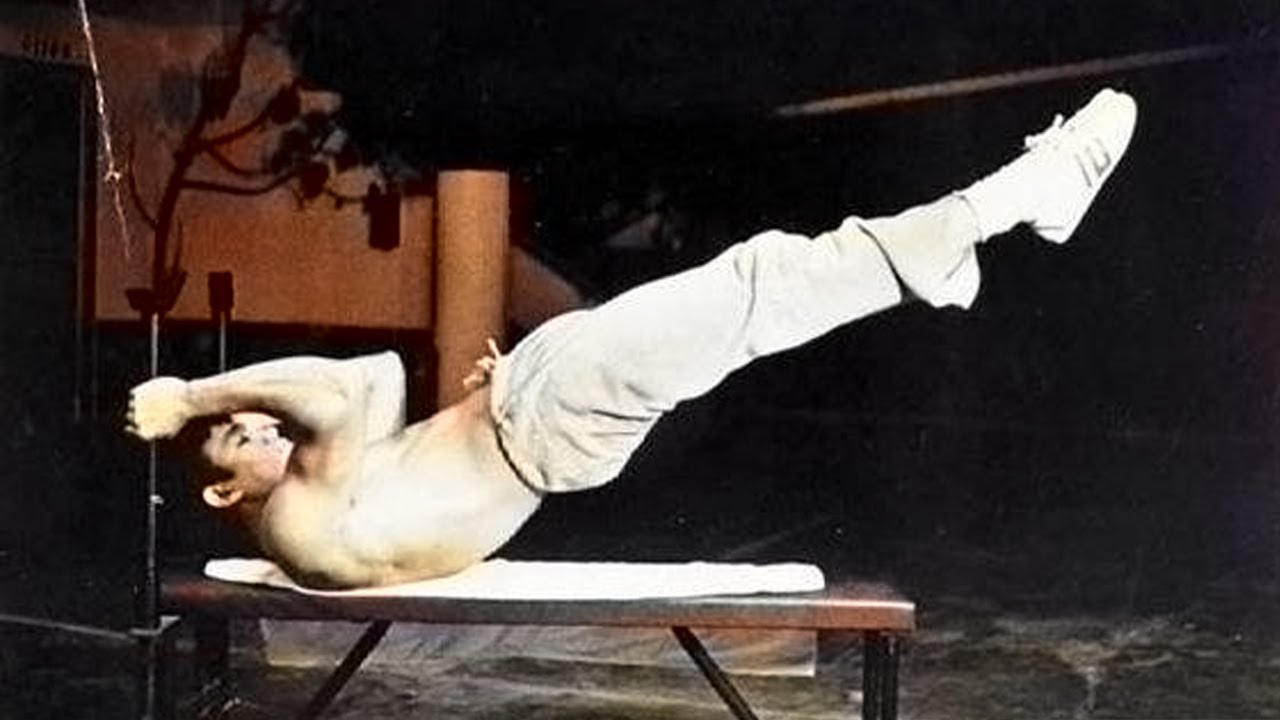
- Hollow Body Holds
- Lie on your back, arms extended overhead and legs extended.
- Lift your arms and legs slightly off the ground, pressing your lower back into the floor.
- Builds isometric core strength crucial for advanced calisthenics moves.
- V-Ups
- Lying on your back, raise your upper body and legs simultaneously to form a “V” shape.
- Targets the entire abdominal region, requiring good coordination.
- Dragon Flags (Advanced)
- Popularized by Bruce Lee, this extreme core exercise involves lowering and raising your body in a straight line with only your upper back on a bench or bar.
Handstands and Inversions
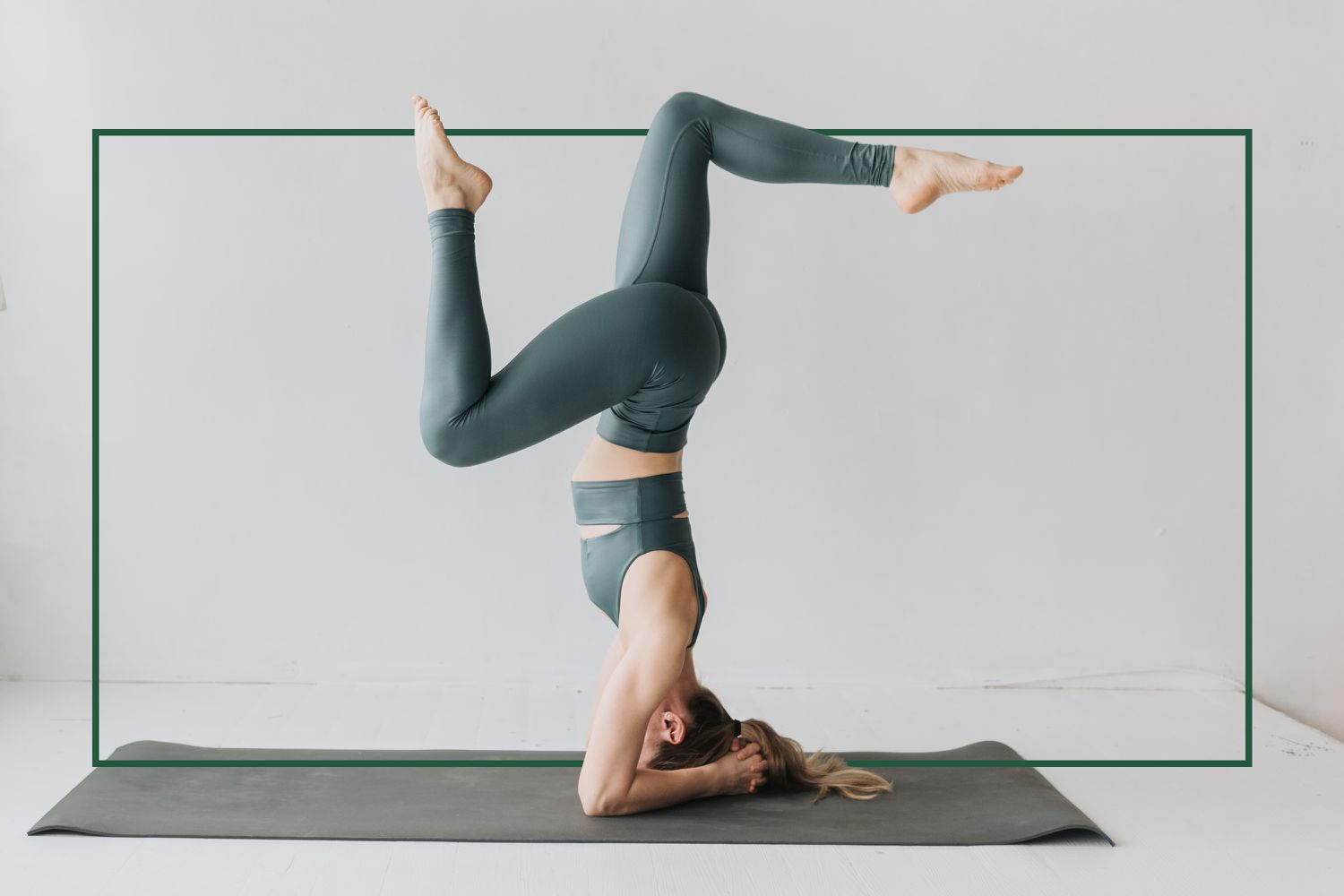
For those looking for an additional challenge, handstands offer a unique way to target the shoulders, triceps, and core.
- Wall-Assisted Handstand
- Kick up against a wall for support.
- Focus on maintaining a tight core and neutral spine.
- Handstand Push-Ups
- Once stable in a handstand, bend your elbows and lower your head toward the floor, then push back up.
- Requires advanced shoulder and upper-body strength, as well as balance.
- Freestanding Handstand
- Ultimate test of balance and upper-body control.
- Mastering this requires consistent practice and strong shoulder stability.
Structuring Your Bodyweight Workouts

Knowing what exercises to do is only half the battle. You also need to understand how to structure your workouts for maximum benefit.
Sets and Repetitions
- Beginners: Focus on 2–3 sets of 8–12 reps for most exercises. Choose easier progressions if needed.
- Intermediate: 3–4 sets of 10–15 reps, or progress to harder variations once you can comfortably exceed 15 reps.
- Advanced: Focus on harder variations and a rep range that challenges you (6–12 reps). You can also implement training circuits that target multiple muscle groups with minimal rest.
Progressive Overload in Bodyweight Training
Unlike traditional weightlifting, you don’t add weights incrementally. Instead, you:
- Increase Time Under Tension: Slow down the eccentric (lowering) phase of a push-up or squat.
- Shorten Rest Periods: Keep your muscles under fatigue, forcing adaptation.
- Change Angles: For instance, place your feet on a higher platform for decline push-ups.
- Use Single-Limb Variations: Shift more weight to one limb, such as one-arm or one-leg exercises.
Training Frequency and Recovery
- Full-Body Workouts: If you’re performing full-body routines, 2–3 sessions per week can be sufficient, especially if you’re training at high intensity.
- Split Routines: More advanced athletes might use upper/lower splits or push/pull/legs splits, training 4–6 days per week.
- Rest and Recovery: Make sure to allow at least 48 hours of recovery for the same muscle group. Active recovery (light walks, yoga, gentle stretching) can aid in reducing soreness and improving mobility.
Recovery and Injury Prevention

Strength training without adequate recovery is a recipe for overtraining and potential injury. Here’s how to stay healthy and injury-free:
- Proper Cool-Down
- Gradually lower your heart rate with light cardio, such as walking in place or slow, deliberate stretching.
- This helps your body transition to rest more smoothly.
- Stretching and Mobility Work
- Consider static stretching post-workout to improve flexibility.
- Foam rolling or using a lacrosse ball can help alleviate muscle tension and knots.
- Adequate Sleep
- Aim for 7–9 hours of quality sleep per night. This is when your body repairs muscle tissue and consolidates motor learning.
- Hydration
- Dehydration can lead to muscle cramps and reduced performance. Drink water consistently throughout the day, especially around workouts.
- Listen to Your Body
- If you feel pain (not just discomfort or fatigue), back off or modify the exercise.
- Overuse injuries are common in repetitive bodyweight training if you push through pain or ignore form breakdowns.
Nutrition and Lifestyle Factors for Optimal Results

Even the best workout plan will fall short if nutrition and lifestyle factors aren’t in check. Here’s a concise overview:
- Balanced Diet
- Focus on lean proteins (chicken, fish, beans, tofu) to support muscle repair.
- Incorporate complex carbohydrates (oats, brown rice, whole grains) for sustained energy.
- Healthy fats (avocados, nuts, seeds) and a variety of fruits and vegetables supply essential micronutrients.
- Protein Intake
- Aim for 1.2–2.0 grams of protein per kilogram of body weight (0.54–0.91 g/lb) daily, depending on your activity level and goals.
- Timing and Meal Composition
- A small protein- and carb-rich meal post-workout aids in muscle recovery.
- Staying consistent with overall daily intake is more important than timing for most people.
- Stress Management
- High stress levels can elevate cortisol, leading to poor recovery and potentially hindering muscle growth.
- Techniques like meditation, yoga, or even leisurely walks can help you manage stress.
- Consistency over Perfection
- Focus on making gradual, sustainable changes in your diet and lifestyle.
- Maintain regular workout schedules, get consistent sleep, and support recovery through balanced nutrition.
Common Mistakes and How to Avoid Them
To get the most out of bodyweight training, be aware of common pitfalls:
- Skipping the Warm-Up
- Leads to decreased performance and higher risk of injury.
- Always take at least 5–10 minutes for light cardio and dynamic stretches.
- Neglecting the Legs or Core
- Some focus too much on upper-body work like push-ups and ignore squats or core exercises.
- A well-rounded routine ensures balanced development and functional strength.
- Lack of Progression
- Sticking with the same exercises and rep counts for months can stall progress.
- Gradually increase difficulty or volume to keep seeing results.
- Overtraining
- Training hard every day without rest leads to burnout, plateau, and possible injuries.
- Schedule rest days and listen to your body.
- Poor Form
- Compromising technique for more reps does more harm than good.
- Focus on correct alignment and a full range of motion.
Sample Bodyweight Training Programs
Below are structured routines you can follow according to your fitness level. Each program balances major muscle groups and incorporates core engagement.
Beginner Program
Frequency: 3 days per week (e.g., Monday, Wednesday, Friday)
- Warm-Up: 5 minutes of light cardio (marching in place, jumping jacks) + dynamic stretching.
- Circuit A (Perform 2–3 rounds; rest 60 seconds between exercises if needed)
- Knee Push-Ups: 8–12 reps
- Bodyweight Squats: 10–15 reps
- Static Plank: 20–30 seconds hold
- Glute Bridges: 10–12 reps
- Circuit B (Perform 2 rounds; rest 60 seconds between exercises)
- Lunges: 5–8 reps per leg
- Mountain Climbers: 20 reps (10 each leg)
- Side Plank: 15–20 seconds each side
- Cool-Down: 3–5 minutes of light stretching (quads, hamstrings, shoulders).
Progress Tip: Once you can comfortably exceed the top rep range, move on to a slightly harder variation (e.g., standard push-ups instead of knee push-ups).
Intermediate Program
Frequency: 4 days per week (Upper/Lower split)
- Days 1 & 3: Upper Body + Core
- Days 2 & 4: Lower Body + Core
Upper Body + Core (Days 1 & 3)
- Warm-Up: 5–10 minutes (light cardio + dynamic stretches, focusing on shoulders and upper back).
- Push-Up Variation: 3 sets of 10–15 reps (regular or diamond push-ups).
- Inverted Rows (using a table edge or sturdy bar): 3 sets of 8–12 reps.
- Pike Push-Ups: 3 sets of 8–10 reps (targets shoulders).
- Plank with Shoulder Taps: 3 sets, 8–12 taps per side.
Lower Body + Core (Days 2 & 4)
- Warm-Up: 5–10 minutes (light cardio + dynamic stretches, focusing on hips and ankles).
- Bodyweight Squats: 4 sets of 12–15 reps.
- Walking Lunges: 3 sets of 10–12 steps per leg.
- Single-Leg Glute Bridges: 3 sets of 10 reps per leg.
- Side Planks: 3 sets of 20–30 seconds per side.
Progress Tip: If you find squats too easy, try adding jump squats (plyometric) or partial pistol squats with assistance.
Advanced Program
Frequency: 5–6 days per week (Push/Pull/Legs split)
This assumes you have access to something to do pull-ups or chin-ups (even a door frame bar or sturdy tree branch).
Day 1 – Push
- Warm-Up: 5–10 minutes.
- Handstand Practice (Wall-Assisted): 5–10 minutes working on alignment.
- Handstand Push-Ups (or Pike Push-Ups): 3–4 sets, 5–8 reps.
- Archer Push-Ups: 3 sets, 6–8 reps per side.
- Diamond Push-Ups: 3 sets, 8–10 reps.
- Core Finisher: Hollow Body Holds, 3 rounds of 20–30 seconds.
Day 2 – Pull
- Warm-Up: 5–10 minutes.
- Pull-Ups or Chin-Ups: 4 sets, 6–10 reps.
- Inverted Rows: 3 sets, 8–12 reps.
- Superman (Lower Back): 3 sets, 15–20 seconds hold.
- Core: Dragon Flag Progressions, 3 sets, 5–8 reps.
Day 3 – Legs
- Warm-Up: 5–10 minutes.
- Pistol Squats: 3 sets, 5–8 reps per leg.
- Bulgarian Split Squats: 3 sets, 8–10 reps per leg.
- Jump Squats: 3 sets, 8–10 reps (focus on soft landings).
- Single-Leg Calf Raises: 3 sets, 12–15 reps per leg.
Repeat the cycle with a rest day or active recovery day in between, depending on your recovery capacity.
Frequently Asked Questions (FAQs)
- Can I Build Real Strength with Bodyweight Exercises?
Absolutely. Bodyweight exercises follow the same principle of progressive overload as weightlifting. If you continually increase difficulty by adjusting angles, tempo, or moving to single-limb variations, you’ll keep building strength. - How Often Should I Train?
It depends on your fitness level and goals. Beginners often see great results with 3 full-body sessions a week. More advanced athletes might split their workouts and train 4–6 days per week with targeted muscle groups. - What If I Can’t Do a Push-Up?
Start with incline push-ups or knee push-ups. Focus on building core and arm strength. Gradually lower the angle of incline (move hands from a table to a chair, then to the floor) as you get stronger. - Do I Need a Pull-Up Bar?
While pull-ups are excellent for back and biceps development, you can substitute with inverted rows using a sturdy table or railing. You can also explore resistance bands or TRX-style suspension training if available. - How Do I Make Sure I’m Progressing Without Weights?
Keep a workout log of your sets, reps, and rest times. Once you’re comfortable performing high reps (15+), move to a harder variation or slow down your rep tempo. - Is It Normal to Be Sore After Every Workout?
Mild to moderate soreness (DOMS—Delayed Onset Muscle Soreness) is common, especially if you’re trying new exercises or pushing harder than usual. Extreme or persistent soreness, however, can indicate overtraining or poor recovery. - Can I Lose Weight with Bodyweight Exercises?
Weight loss primarily depends on calorie balance. Bodyweight training can burn calories and build muscle, which helps improve metabolism. Pair it with a balanced diet for optimal results. - Should I Still Do Cardio?
Cardio has numerous health benefits, including improved cardiovascular health and endurance. You can either incorporate cardio on separate days, or add high-intensity interval training (HIIT) within your bodyweight sessions (e.g., mountain climbers, burpees). - Do I Need Supplements for Bodyweight Training?
Supplements like protein powder or creatine can help if your diet lacks adequate protein or nutrients. However, they’re not mandatory. Whole, unprocessed foods paired with proper training and recovery will yield excellent results. - How Long Does It Take to See Results?
You may notice strength gains in as little as 2–4 weeks. Visible muscle changes often take 8–12 weeks or more, depending on your body composition, diet, and consistency.
Conclusion
Bodyweight exercises offer an incredibly versatile and effective method of training. They free you from the constraints of gym memberships and specialized equipment while providing a full-body workout capable of building significant strength and muscle. By mastering foundational moves such as push-ups, squats, and planks—and then progressing to advanced variations like pistol squats and handstand push-ups—you can continually challenge your body to grow stronger.
Remember the core principles:
- Always warm up to protect against injuries.
- Emphasize proper form over heavy volume.
- Apply progressive overload to keep seeing improvements.
- Balance your training with adequate rest, good nutrition, and a healthy lifestyle.
Whether your goals include gaining muscle, losing fat, or simply improving your functional fitness, bodyweight exercises can help you get there. With this comprehensive, no-equipment guide in hand, you have all the tools you need to design a routine that fits your schedule, matches your fitness level, and propels you forward in your health journey. Stay consistent, stay motivated, and enjoy the flexibility and freedom that come with using your own body as the ultimate piece of workout equipment.


